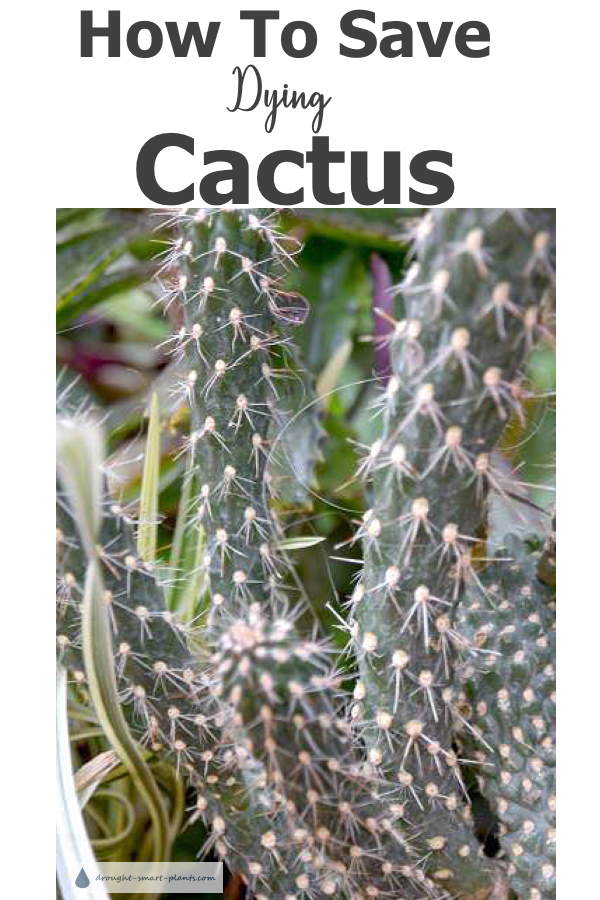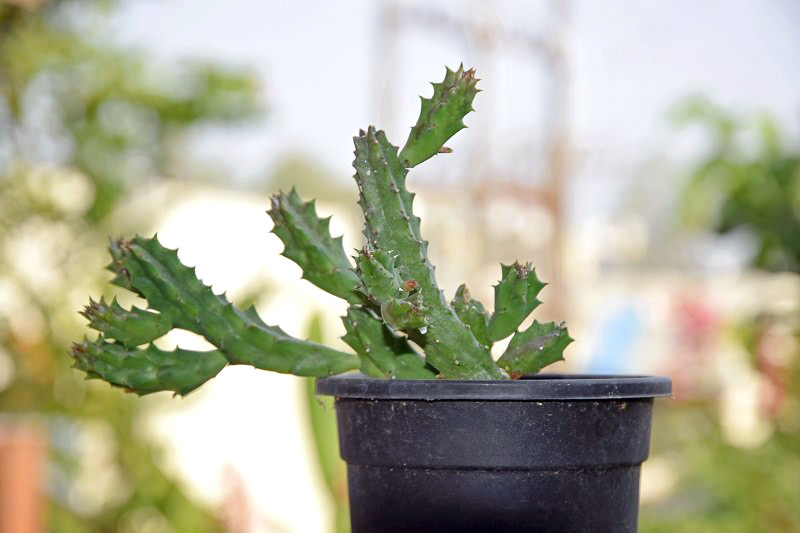Keep all these points in mind to save any type of dying cactus! Don’t let your beloved cacti succumb to fate by acting at the right time.
As an Amazon Associate I earn from qualifying purchases.
Other links on this site may lead to other companies that I’m associated with.
“Low maintenance” – that’s the first thing that comes to our mind when we hear the word ‘cactus’. Well, there is no doubt about cactus being a low maintenance plant. Still, some gardeners can’t even keep these low maintenance succulents alive.
That’s because they don’t act at the right time.

Your cactus will show signs such as leaves and segments falling, discoloring, drying, turning soft and mushy.
Be on the lookout for such signs. That’s how you know there is something wrong with your cactus – and then comes the part where you save it!
It’s all About Watering
When it comes to watering, things could go wrong either because of overwatering or underwatering. Let’s discuss both of them.

Underwatering
Most of us know that cactus requires infrequent watering but what we don’t know is that too little watering can also be problematic.
Shrunken, wrinkled, or wilting parts of the cactus indicate a lack of watering.
That can easily be remedied by watering the plant thoroughly. Allow the excess water to drain from the bottom of the pot naturally.
Overwatering
Root rot is the most common culprit behind dying cactus.
We tend to think that more is always good which is not justified.
To check if the plant is suffering from root rot gently lift off the plant out from the pot and check the roots. Brown and mushy roots indicate root rot while white and fleshy roots are signs that root is healthy.
To get rid of rotten roots, using a sharp knife, cut back the damaged part of roots.
Sunlight is Crucial
A cactus shows signs whether you are exposing it to too much sunlight or too little. By reading these signs, you can take crucial steps at the right time to save your cacti.

Underexposure to Sun
Cactus develops a condition called etiolation in a lack of sunlight.
The signs to watch for are things like becoming overly tall, skinny, and pale in color.
The rounded tops become pointy, and the stem of column-shaped stems turn stringy which all points in one direction – lack of sunlight.
So, find a spot that receives more sunlight such as a Southern or Western facing window and re-locate the cactus there.
Overexposure to Sun
Just like underexposure, overexposure to direct sun for prolonged periods is also harmful. Keep a close look on the part of the cactus which is directly exposed to the sun.
If the part is turning yellowish or brownish, this indicates that the cactus has been exposed to the sun for too long.
Relocate it immediately to a spot with more shade.
Beware of Insects
Without a doubt, insects can harm a plant to the extent that they kill it. Cactus is no exception to this, and common pests such as spider mites and mealybugs can cause irreparable damage to them.
Get rid of havoc causing insects by applying rubbing alcohol using a cotton swab on the infected area. You can also use miticide to get rid of spider mites.

Cut Back The Rotten Part
The parts of the cactus that turn brown and black indicate that it is rotten.
Cut back any such parts.
You can use a sharp knife or any other sharp tool for cutting away such parts. The leading cause behind rotting is overwatering and the resulting fungus development.
Cover up the newly exposed part by applying rooting hormone or fungicide on those parts.
Keep the cactus undisturbed in a shady spot for the next ten days.
Re-pot the cactus in a well-draining potting mix (one part peat, two parts garden soil, and two parts coarse sand).
NOTE: Wear nitrile gloves for protection against the prickly thorns of cactus. Leather gloves will also work but be careful with them.
Wash it Routinely
With time you’ll notice that dust and dirt start to accumulate on the surface of the cacti.
This layer of dust and dirt prevents the sunlight from reaching the surface.
As plants require sunlight for photosynthesis, it may not be able to photosynthesize properly. So to prevent this wipe down the cactus with a soaked sponge and a drop of liquid soap.
Alternatively, you can place the cactus in the sink under the faucet and rinse it off.

Feed it
What other better way to make the plant healthy and stronger than a boost of nutrients?
Just like other plants, cacti will also show enhanced resistance to diseases and other problems when it is supplemented with proper nutrition. As the nutrients deplete over time in potted plants, they require more fertilization compared to outdoor plants.
Go for a well balanced (10-10-10) fertilizer diluted one fourth to its actual strength.
You can also use a fertilizer with different NPK ratios such as 10-30-20 or any other but make sure that nitrogen content remains low in all of them.
Stunted growth and flabby texture are the adverse effects of using too much nitrogen.
In the growing season fertilize the cacti once a week with the fertilizing solution. In the fall, the cacti turn somewhat dormant and require less fertilizing and watering.

Elly Rey is a content writer on BalconyGardenWeb which serves millions of visitors with fresh and informative content every month.




